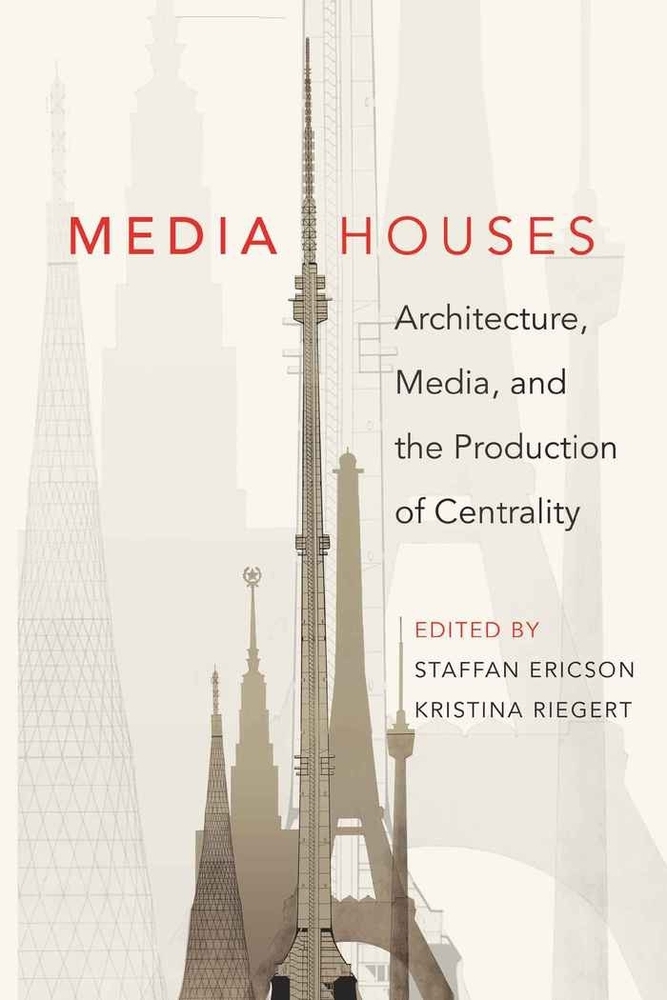
Zustellung: Di, 22.07. - Fr, 25.07.
Versand in 7 Tagen
VersandkostenfreiBestellen & in Filiale abholen:
In much recent theory, the media are described as ephemeral, ubiquitous, and de-localized. Yet the activity of modern media can be traced to spatial centers that are tangible enough - some even monumental. This book offers multidisciplinary and historical perspectives on the buildings of some of the world's major media institutions. Paradoxically, as material and aesthetic manifestations of "mediated centers" of power, they provide sites to the siteless and solidity to the immaterial. The authors analyse the ways that architectural form and organization reflect different eras, media technologies, ideologies, and relations with the public in media houses from New York and Silicon Valley to London, Moscow, and Beijing.
Inhaltsverzeichnis
Contents: Staffan Ericson/Kristina Riegert/Patrik Åker: Introduction - Staffan Ericson: The Interior of the Ubiquitous: Broadcasting House, London - Kristina Riegert: The End of the Iconic Home of Empire: Pondering the Move of the BBC World Service from Bush House - Patrik Åker: Ostankino TV Tower, Moscow: An Obsession with Space - Peter Jakobsson/Fredrik Stiernstedt: Googleplex and Informational Culture - Shannon Mattern: Edge Blending: Light, Crystalline Fluidity, and the Materiality of New Media at Gehry's IAC Headquarters - Sven-Olov Wallenstein: Looping Ideology: The CCTV Center in Beijing - Helena Mattsson: Real TV: Architecture as Social Media.
Jetzt reinlesen: Inhaltsverzeichnis(pdf)Produktdetails
Erscheinungsdatum
31. März 2010
Sprache
englisch
Seitenanzahl
218
Herausgegeben von
Staffan Ericson, Kristina Riegert
Weitere Beteiligte
Staffan Ericson, Kristina Riegert
Verlag/Hersteller
Produktart
gebunden
Gewicht
420 g
Größe (L/B/H)
16/150/225 mm
ISBN
9781433105845
Entdecken Sie mehr
Pressestimmen
«The fascinating studies of the architecture of 'media houses' - the head-office buildings of powerful media corporations - brought together in this edited book, make a strikingly original contribution to current debates about the power of so-called 'central media'. Together they are a significant addition to our understanding of the ways in which the spaces and places of central media institutions contribute to defining the common, globalized world of the early twenty-first century. A 'must-read' for all of us concerned with global media today.» (Paddy Scannell, University of Michigan)
«This collection follows a wonderfully original pathway to understanding media: through the buildings that house them. The book offers a harvest of insight about the historical and cultural footprint of media by reading the built environments of media institutions in a diverse array of nations, styles, and moments.» (John Durham Peters, University of Iowa)
«This collection follows a wonderfully original pathway to understanding media: through the buildings that house them. The book offers a harvest of insight about the historical and cultural footprint of media by reading the built environments of media institutions in a diverse array of nations, styles, and moments.» (John Durham Peters, University of Iowa)
Bewertungen
0 Bewertungen
Es wurden noch keine Bewertungen abgegeben. Schreiben Sie die erste Bewertung zu "Media Houses" und helfen Sie damit anderen bei der Kaufentscheidung.









